COMMENT OF THE DAY: THE ONLY MACKIE AND KAMRATH HOMES LEFT ON THE TIEL WAY LOOP 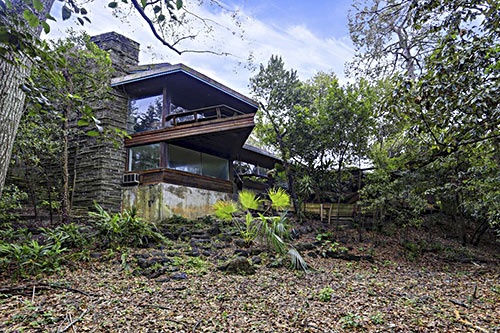 “. . . My husband and I drove around Tiel Way after the storm to check on all the MacKie and Kamraths. There were several homes on the street that flooded — and not just by a few inches but into their second levels. One of the things that make the Kamraths of this era (and really, many high-end midcentury homes) so gorgeous and unique is the abundant use of wood panels for all walls, doors, built-in storage cabinets and seating — everything. But it also makes them particularly expensive and hard to fix after extensive water damage.
As Swamplot reported earlier this year, the home at 2 Tiel Way was bought with the intention to restore but had so much termite and water damage it would have cost double to restore compared to a full rebuild price. So that’s what they are doing: rebuilding the same house. . . . It’s a controversial choice but in my opinion it’s the best architectural conservation alternative to demolition. But not everyone has the resources to undertake something like a full architectural rebuild. So while the demo of this house, one of Kamrath’s finest, is certainly a punch in the gut . . . I get it. They probably would have saved it if they could.
Tiel Way was the last concentration of MacKie and Kamrath’s great residential works, at one point having 7 homes on the loop. After this demolition we will be down to 2.5: the Gold Brick–awarded restoration at 67 Tiel Way (which thankfully, did not appear to have Harvey flooding issues), Kamrath’s own residence at 8 Tiel Way (definitely flooded, but appears to be safe at the moment), and the rebuild currently in progress at 2 Tiel Way.
48 Tiel Way won’t be the only midcentury treasure lost to Harvey, but it’s certainly one of the saddest to see go.” [Rabbit, commenting on Daily Demolition Report: Tiel Repeal; previously on Swamplot] Photo of 48 Tiel Way: HAR
“. . . My husband and I drove around Tiel Way after the storm to check on all the MacKie and Kamraths. There were several homes on the street that flooded — and not just by a few inches but into their second levels. One of the things that make the Kamraths of this era (and really, many high-end midcentury homes) so gorgeous and unique is the abundant use of wood panels for all walls, doors, built-in storage cabinets and seating — everything. But it also makes them particularly expensive and hard to fix after extensive water damage.
As Swamplot reported earlier this year, the home at 2 Tiel Way was bought with the intention to restore but had so much termite and water damage it would have cost double to restore compared to a full rebuild price. So that’s what they are doing: rebuilding the same house. . . . It’s a controversial choice but in my opinion it’s the best architectural conservation alternative to demolition. But not everyone has the resources to undertake something like a full architectural rebuild. So while the demo of this house, one of Kamrath’s finest, is certainly a punch in the gut . . . I get it. They probably would have saved it if they could.
Tiel Way was the last concentration of MacKie and Kamrath’s great residential works, at one point having 7 homes on the loop. After this demolition we will be down to 2.5: the Gold Brick–awarded restoration at 67 Tiel Way (which thankfully, did not appear to have Harvey flooding issues), Kamrath’s own residence at 8 Tiel Way (definitely flooded, but appears to be safe at the moment), and the rebuild currently in progress at 2 Tiel Way.
48 Tiel Way won’t be the only midcentury treasure lost to Harvey, but it’s certainly one of the saddest to see go.” [Rabbit, commenting on Daily Demolition Report: Tiel Repeal; previously on Swamplot] Photo of 48 Tiel Way: HAR
Tag: Comments
COMMENT OF THE DAY: ANOTHER WILLOW MEADOWS FAREWELL 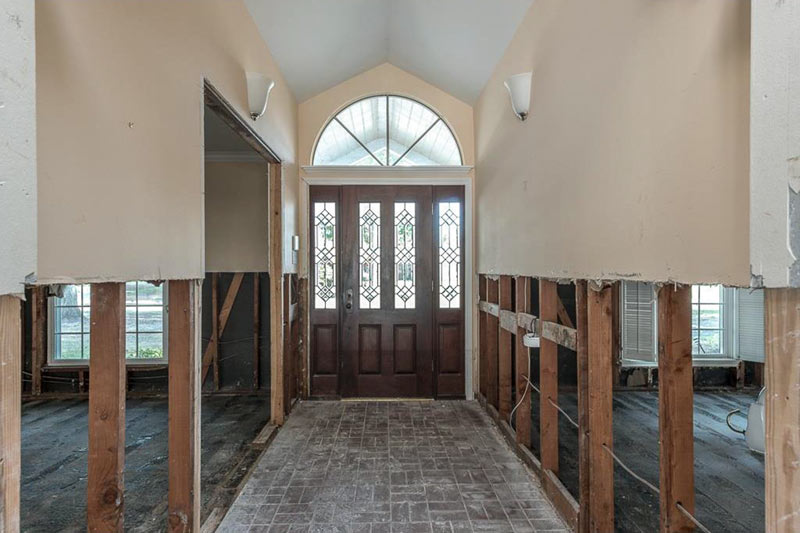 “Willowgrove is a beautiful street, and sadly, I think we’re going to see several homes come down akin to what we saw & are seeing again in Meyerland (I believe there was another one yesterday). It’s predominately 1960s single-story ranch homes, many custom designed and some of them oversized vs. the rest of neighborhood, below a canopy of oaks that drape the street. It’s terribly sad that what it was before is just gone now. Willowgrove backs up to one of the feeder ravines that breached when the bayou did, and homes on both sides of it — Cliffwood and Willowgrove — took a massive hit compared to the surrounding streets that only had street flooding. The cap on flood insurance, if homeowners had it, wouldn’t cover the value of those homes. I’ve had neighbors ask me, and I genuinely do not know — are those concrete ravines/mini-bayous supposed to drain/connect to Willow Water Hole at some point? Was that already supposed to have happened? If so, what was the delay?” [Heather, commenting on Daily Demolition Report: Lynn Parked] Photo of 10202 Willowgrove Dr. interior (now for sale): HAR
“Willowgrove is a beautiful street, and sadly, I think we’re going to see several homes come down akin to what we saw & are seeing again in Meyerland (I believe there was another one yesterday). It’s predominately 1960s single-story ranch homes, many custom designed and some of them oversized vs. the rest of neighborhood, below a canopy of oaks that drape the street. It’s terribly sad that what it was before is just gone now. Willowgrove backs up to one of the feeder ravines that breached when the bayou did, and homes on both sides of it — Cliffwood and Willowgrove — took a massive hit compared to the surrounding streets that only had street flooding. The cap on flood insurance, if homeowners had it, wouldn’t cover the value of those homes. I’ve had neighbors ask me, and I genuinely do not know — are those concrete ravines/mini-bayous supposed to drain/connect to Willow Water Hole at some point? Was that already supposed to have happened? If so, what was the delay?” [Heather, commenting on Daily Demolition Report: Lynn Parked] Photo of 10202 Willowgrove Dr. interior (now for sale): HAR
COMMENT OF THE DAY: NO NEED FOR A TRAIN ON I-10 WHEN YOU CAN JUST PARK-AND-BUS 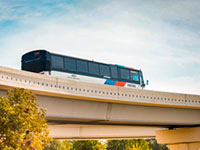 “. . . The train isn’t going to travel that much faster than buses, if at all. Also, buses in the Katy corridor make just one stop at most between the burbs and Downtown (the major route is express from the Park-and-Ride lot direct to Downtown). And people play on their phones on the bus (have you never been on one? the park-and-ride vehicles have nice cushy seats and baggage racks). And unless one’s destination is outside the CBD, no transfers are required; you are likely dropped off within a few blocks of your destination, an easy walk. Furthermore, on the highly used Park-and-Ride routes the buses leave every several minutes; you don’t have to time your arrival, the wait time to depart is minimal. Commuter rail never works like that (though light rail can).
The assumption that rail is going to provide superior service simply isn’t true. In fact, it’s likely to be worse service for the patrons than what we have now with the Park-and-Ride buses. Especially since most everyone will have to drive to the station anyway, so no difference there.” [Local Planner, commenting on Was It a Good Idea To Derail I-10?] Photo: Energy Corridor
“. . . The train isn’t going to travel that much faster than buses, if at all. Also, buses in the Katy corridor make just one stop at most between the burbs and Downtown (the major route is express from the Park-and-Ride lot direct to Downtown). And people play on their phones on the bus (have you never been on one? the park-and-ride vehicles have nice cushy seats and baggage racks). And unless one’s destination is outside the CBD, no transfers are required; you are likely dropped off within a few blocks of your destination, an easy walk. Furthermore, on the highly used Park-and-Ride routes the buses leave every several minutes; you don’t have to time your arrival, the wait time to depart is minimal. Commuter rail never works like that (though light rail can).
The assumption that rail is going to provide superior service simply isn’t true. In fact, it’s likely to be worse service for the patrons than what we have now with the Park-and-Ride buses. Especially since most everyone will have to drive to the station anyway, so no difference there.” [Local Planner, commenting on Was It a Good Idea To Derail I-10?] Photo: Energy Corridor
COMMENT OF THE DAY: DON’T TALK TO ME ABOUT THE WEATHER 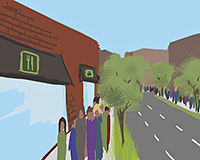 “I lived in Washington, DC for 8 years and the typical Washington summer day is every bit as miserable as a Houston summer day. (There are somewhat fewer of them, of course.) And all summer, the streets were crowded with people walking. In the dead of winter, when it was 20 degrees out, the streets were full of people walking. The difference is that the city was built for walking; sidewalks rarely vanished mid block. Pedestrian crossings weren’t a mile apart. There were relatively few city streets eight lanes wide to get across.
Obviously the central city density was a big part of that, but funny thing: people seem to actually like walking. Part of that time I lived in Arlington, VA, which is about like the Heights in density, and I thought nothing of walking 15 minutes up the street to the Metro station or the main boulevard where the shops and cafes and whatnot were. I also would regularly visit friends in Takoma Park, MD, another surburban-ish area, and . . . people walked.
When I was in college in upstate NY, people walked (most students didn’t have cars on campus, because why would you have a car on campus). People walked 20 minutes downtown on subzero nights to go drinking. People trudged up the giant hill to campus in snow and wind. They could wait for the campus shuttle bus a lot of the time . . . but mostly they didn’t. They walked.
There are very real reasons that people don’t walk as much in Houston, but the weather ain’t one of them.” [John (another one), commenting on Comment of the Day: Walking Is Not Native to Houston] Illustration: Lulu
“I lived in Washington, DC for 8 years and the typical Washington summer day is every bit as miserable as a Houston summer day. (There are somewhat fewer of them, of course.) And all summer, the streets were crowded with people walking. In the dead of winter, when it was 20 degrees out, the streets were full of people walking. The difference is that the city was built for walking; sidewalks rarely vanished mid block. Pedestrian crossings weren’t a mile apart. There were relatively few city streets eight lanes wide to get across.
Obviously the central city density was a big part of that, but funny thing: people seem to actually like walking. Part of that time I lived in Arlington, VA, which is about like the Heights in density, and I thought nothing of walking 15 minutes up the street to the Metro station or the main boulevard where the shops and cafes and whatnot were. I also would regularly visit friends in Takoma Park, MD, another surburban-ish area, and . . . people walked.
When I was in college in upstate NY, people walked (most students didn’t have cars on campus, because why would you have a car on campus). People walked 20 minutes downtown on subzero nights to go drinking. People trudged up the giant hill to campus in snow and wind. They could wait for the campus shuttle bus a lot of the time . . . but mostly they didn’t. They walked.
There are very real reasons that people don’t walk as much in Houston, but the weather ain’t one of them.” [John (another one), commenting on Comment of the Day: Walking Is Not Native to Houston] Illustration: Lulu
COMMENT OF THE DAY: WHAT WE MEAN NOW WHEN WE TALK ABOUT ‘TRADITIONAL’ BUILDING  “. . . A ‘real’ dome would be constructed of stacked bricks that rest on each other and use physics to stay in place, like they did in the ancient times that you seem to be so fond of. This is a faux dome made of steel meant to replicate a classical look. Just because something mimics an older style, does not mean that it’s any more ‘real’ than the new stuff.” [Superdave, commenting on New Dome Rises from the Streets of Montrose to Top Church Position] Illustration: Lulu
“. . . A ‘real’ dome would be constructed of stacked bricks that rest on each other and use physics to stay in place, like they did in the ancient times that you seem to be so fond of. This is a faux dome made of steel meant to replicate a classical look. Just because something mimics an older style, does not mean that it’s any more ‘real’ than the new stuff.” [Superdave, commenting on New Dome Rises from the Streets of Montrose to Top Church Position] Illustration: Lulu
COMMENT OF THE DAY: SELLING THE HOUSE AT THE END OF THE RAINBOW  “Fabulous lot adorned with critters of all varieties, this property now features wild herrings, cranes, frogs, alligators and migrating herds of antelope during the rainy season. The home was originally built as an ark on pristine gathering grounds for pairs of animals to accumulate during the final days of destruction per sellers disclosure. Tall mature trees on property present amazing opportunity to cultivate your very own white dove habitat for olive branch collection.” [Toby, commenting on Houston Home Listing Photo of the Day: Outdoor Dining Area] Illustration: Lulu
“Fabulous lot adorned with critters of all varieties, this property now features wild herrings, cranes, frogs, alligators and migrating herds of antelope during the rainy season. The home was originally built as an ark on pristine gathering grounds for pairs of animals to accumulate during the final days of destruction per sellers disclosure. Tall mature trees on property present amazing opportunity to cultivate your very own white dove habitat for olive branch collection.” [Toby, commenting on Houston Home Listing Photo of the Day: Outdoor Dining Area] Illustration: Lulu
COMMENT OF THE DAY: WHAT FLOODING ON THE WEST SIDE TOOK AWAY  “Homes underwater for extended periods can be rebuilt, as long as they were not subjected to currents sufficient to cause major structural damage or foundation scour. They just take longer to dry out (ours took over a month).
Like Local Planner said, in many of the flooded neighborhoods north of the bayou, original-condition homes had basically no value before the flood (i.e. they were being sold for lot value and torn down). The process is indeed accelerating, with new builds being elevated à la Bellaire and Meyerland.
The big question mark for me is how much of a market there’ll be for $1+ million new homes in a potentially flood-prone area (even if your elevated home doesn’t flood during the next big one, you’d likely lose the cars in your non-elevated garage and need to be evac’d by boat). The market was soft in the Energy Corridor even before the flood. A new supply of high-end homes doesn’t automatically beget demand. Hopefully the new MD Anderson complex in the area will help (and potentially spur further diversification of employment in the Energy Corridor beyond oil and gas).” [Grant, commenting on Daily Demolition Report: Memorial Glint] Illustration: Lulu
“Homes underwater for extended periods can be rebuilt, as long as they were not subjected to currents sufficient to cause major structural damage or foundation scour. They just take longer to dry out (ours took over a month).
Like Local Planner said, in many of the flooded neighborhoods north of the bayou, original-condition homes had basically no value before the flood (i.e. they were being sold for lot value and torn down). The process is indeed accelerating, with new builds being elevated à la Bellaire and Meyerland.
The big question mark for me is how much of a market there’ll be for $1+ million new homes in a potentially flood-prone area (even if your elevated home doesn’t flood during the next big one, you’d likely lose the cars in your non-elevated garage and need to be evac’d by boat). The market was soft in the Energy Corridor even before the flood. A new supply of high-end homes doesn’t automatically beget demand. Hopefully the new MD Anderson complex in the area will help (and potentially spur further diversification of employment in the Energy Corridor beyond oil and gas).” [Grant, commenting on Daily Demolition Report: Memorial Glint] Illustration: Lulu
COMMENT OF THE DAY: WALKING IS NOT NATIVE TO HOUSTON  “. . . I do think Houstonians tend to really regard walkers as oddities of nature.
Our climate doesn’t really foster a natural desire to walk outside so it is a strange sight to see someone actually — outside. Walking. As a native Houstonian, it has taken me decades to realize that walking along a bayou trail — and using relevant sidewalks to get to/from it — is actually quite nice.
That being said, I’m more mindful of fellow pedestrians when I’m in my car. I yield for them not only out of lawful duty, general Southern courtesy, but also as a slight ‘Atta boy!’ for them actually walking.” [Wolf Brand Chili, commenting on Comment of the Day: Unlearning That Nasty Stopping for Pedestrians Habit] Illustration: Lulu
“. . . I do think Houstonians tend to really regard walkers as oddities of nature.
Our climate doesn’t really foster a natural desire to walk outside so it is a strange sight to see someone actually — outside. Walking. As a native Houstonian, it has taken me decades to realize that walking along a bayou trail — and using relevant sidewalks to get to/from it — is actually quite nice.
That being said, I’m more mindful of fellow pedestrians when I’m in my car. I yield for them not only out of lawful duty, general Southern courtesy, but also as a slight ‘Atta boy!’ for them actually walking.” [Wolf Brand Chili, commenting on Comment of the Day: Unlearning That Nasty Stopping for Pedestrians Habit] Illustration: Lulu
COMMENT OF THE DAY RUNNER-UP: WHY YOU SHOULD TRY BOATING ON THE BAYOU 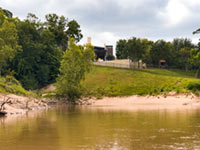 “. . . Buffalo Bayou looks really nice from a kayak or canoe, and you can see the houses from the water. I’ve encountered all sorts of wildlife including many different bird species, turtles, and an alligator. There are maps online locating the put-in / take-out spots, if you’re so inclined. Pro tip: if you’re paddling by yourself and wish to take out at the same spot you put in, paddle upstream first, and save the easier downstream half for when you’re tired and just want to go home.” [GoogleMaster, commenting on Comment of the Day: The Real Reason Why Buffalo Bayou Smells and Looks the Way It Does]
“. . . Buffalo Bayou looks really nice from a kayak or canoe, and you can see the houses from the water. I’ve encountered all sorts of wildlife including many different bird species, turtles, and an alligator. There are maps online locating the put-in / take-out spots, if you’re so inclined. Pro tip: if you’re paddling by yourself and wish to take out at the same spot you put in, paddle upstream first, and save the easier downstream half for when you’re tired and just want to go home.” [GoogleMaster, commenting on Comment of the Day: The Real Reason Why Buffalo Bayou Smells and Looks the Way It Does]
COMMENT OF THE DAY: THE REAL REASON WHY BUFFALO BAYOU SMELLS AND LOOKS THE WAY IT DOES  “If Buffalo Bayou stunk so much, then no one would have built a bunch of expensive homes all along it (west of downtown). Most of the Houston area’s waste water effluent flows into the Bayou east of downtown anyways. The Clinton/69th plant (the largest in the city) is just east of downtown, and the Sims and Braes plants don’t enter until well past downtown. With that said, I don’t think the treatment plants are the big contributors to the overall unpleasantness of the Buffalo Bayou water (flood events not withstanding). Most of the effluent (when the plants are properly operating) is nearly clear and usually only has an ‘earthy’ odor to it if any at all. I think the big issue with the bayou’s water quality is the regular runoff and trash that flows into it and eventually lines the shores of it all along downtown.” [nmj, commenting on The North Canal, a New Downtown Island, and Other Secret Plans for Downtown Houston’s Future] Photo: Swamplot inbox
“If Buffalo Bayou stunk so much, then no one would have built a bunch of expensive homes all along it (west of downtown). Most of the Houston area’s waste water effluent flows into the Bayou east of downtown anyways. The Clinton/69th plant (the largest in the city) is just east of downtown, and the Sims and Braes plants don’t enter until well past downtown. With that said, I don’t think the treatment plants are the big contributors to the overall unpleasantness of the Buffalo Bayou water (flood events not withstanding). Most of the effluent (when the plants are properly operating) is nearly clear and usually only has an ‘earthy’ odor to it if any at all. I think the big issue with the bayou’s water quality is the regular runoff and trash that flows into it and eventually lines the shores of it all along downtown.” [nmj, commenting on The North Canal, a New Downtown Island, and Other Secret Plans for Downtown Houston’s Future] Photo: Swamplot inbox
COMMENT OF THE DAY: UNLEARNING THAT NASTY STOPPING FOR PEDESTRIANS HABIT  “I recently moved back to Houston after living in Colorado for a few years. I still find myself in the habit of coming to a complete stop any time that I see a pedestrian attempting to cross a street. In CO, it is state law to stop at any legal pedestrian crossing should someone be there. Many of those crossings have signage that illuminates when the pedestrian presses the button to cross. Some even illuminate the crosswalk itself á la Galleria crosswalks, but it’s expected that you stop whether those are in place or not. Also, most people there abide by the rule of allowing people to cross at major intersections (traffic lights) before passing through in their vehicles; this is something that my fellow Houstonians always honk at me for doing here.” [TD, commenting on Walk This Way] Photo: Kevin Trotman (license)
“I recently moved back to Houston after living in Colorado for a few years. I still find myself in the habit of coming to a complete stop any time that I see a pedestrian attempting to cross a street. In CO, it is state law to stop at any legal pedestrian crossing should someone be there. Many of those crossings have signage that illuminates when the pedestrian presses the button to cross. Some even illuminate the crosswalk itself á la Galleria crosswalks, but it’s expected that you stop whether those are in place or not. Also, most people there abide by the rule of allowing people to cross at major intersections (traffic lights) before passing through in their vehicles; this is something that my fellow Houstonians always honk at me for doing here.” [TD, commenting on Walk This Way] Photo: Kevin Trotman (license)
COMMENT OF THE DAY: IF THE HEIGHTS LIQUOR SALES REFERENDUM GOES DOWN  “I understand that data is not the plural of anecdote, but I’m pretty sure Prop F (the relaxation of prohibition in the Heights) will fail to pass. Turnout is going to be very low, especially among the demographic that would favor repealing the dry status. Also, the best argument for lifting the alcohol sales ban, getting a decent grocery store, was rendered moot by the partial repeal last year.
If people want to try again, I suggest they wait until the next presidential election year, where turnout would be higher, and consider restricting the local option to food and beverage permit holders only, as a lot of the neighborhood seem to be terrified of bars opening near them.” [Angostura, commenting on EaDo for Offices; Heights Mercantile Near Capacity; Heights Liquor Laws on the Ballot Today] Illustration: Lulu
“I understand that data is not the plural of anecdote, but I’m pretty sure Prop F (the relaxation of prohibition in the Heights) will fail to pass. Turnout is going to be very low, especially among the demographic that would favor repealing the dry status. Also, the best argument for lifting the alcohol sales ban, getting a decent grocery store, was rendered moot by the partial repeal last year.
If people want to try again, I suggest they wait until the next presidential election year, where turnout would be higher, and consider restricting the local option to food and beverage permit holders only, as a lot of the neighborhood seem to be terrified of bars opening near them.” [Angostura, commenting on EaDo for Offices; Heights Mercantile Near Capacity; Heights Liquor Laws on the Ballot Today] Illustration: Lulu
COMMENT OF THE DAY: BEWARE OF NEIGHBORHOOD AVERAGES 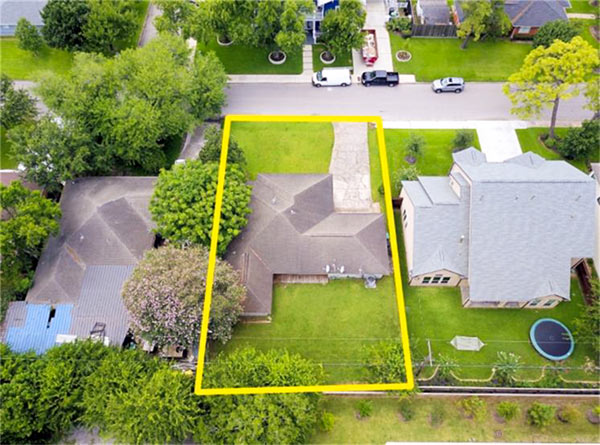 “Anything zoomed out to the neighborhood scale post-Harvey impact-wise waters down the data so much as to be useless. In the Knollwood-Woodside area where homes are “up ~3%,†it’s a mix of ~$800k newbuilds that mostly didn’t flood and ~$400-500k 1950s houses, some of which flooded and many-most that didn’t. That means any additional newbuild sale immediately skews the pricing average. What has already hit the market lately are mostly original homes that flooded, being sold as-is as teardowns (continuing the trend of the neighborhood), with lot-value on an upswing. I guess I presume all of Knollwood will be new construction in the near future, and almost all of ‘greater Braeswood’ being new construction soon, with everything getting higher elevations . . .” [juancarlos31, commenting on Harvey’s Effect on Housing Prices, Neighborhood by Neighborhood; Houston Press Stops the Presses; Astros Fans Flood Downtown] Photo of house for sale at 8311 Lorrie Dr., Knollwood Village: HAR
“Anything zoomed out to the neighborhood scale post-Harvey impact-wise waters down the data so much as to be useless. In the Knollwood-Woodside area where homes are “up ~3%,†it’s a mix of ~$800k newbuilds that mostly didn’t flood and ~$400-500k 1950s houses, some of which flooded and many-most that didn’t. That means any additional newbuild sale immediately skews the pricing average. What has already hit the market lately are mostly original homes that flooded, being sold as-is as teardowns (continuing the trend of the neighborhood), with lot-value on an upswing. I guess I presume all of Knollwood will be new construction in the near future, and almost all of ‘greater Braeswood’ being new construction soon, with everything getting higher elevations . . .” [juancarlos31, commenting on Harvey’s Effect on Housing Prices, Neighborhood by Neighborhood; Houston Press Stops the Presses; Astros Fans Flood Downtown] Photo of house for sale at 8311 Lorrie Dr., Knollwood Village: HAR
COMMENT OF THE DAY: HOUSTON IS USUALLY BETTER WHERE IT ISN’T PLANNED TO BE  “I’m going to go ahead and disagree on the value of planning. The best parts of the city (19th St, parts of Washington, parts of Midtown) were developed before the city passed Chapter 42, and would be illegal to replicate today.
What has planning gotten our fair city over the past half-century? Here’s a partial list:
1.) Density caps inside the loop (since repealed), driving multifamily development to areas farther away from downtown, increasing sprawl.
2.) 70+ ft. right-of-ways, which, along with our 25-ft setbacks, result in an absurd 120 feet between facades. Compare that to unplanned, human-scaled environments in pre-19th century cities and the result is 25% of land completely wasted, or given over to automobiles instead of people.
3.) Parking minimums, requiring up to 75% of land be given over to car storage.
4.) 25-ft. retail setbacks, which, combined with parking minimums, essentially mandate strip-mall development.
What Houston does well is where it doesn’t ‘plan.’ We don’t segregate residential, commercial and retail. We don’t limit residential density (much) (inside the loop), we don’t cap multi-family density (any more). All those great, walkable places we travel to on vacation have one thing in common: the almost complete lack of planning. And where they did do ‘planning’ it did more harm than good. The gothic quarter in Barcelona is way more charming than the Eixample, and don’t get me started on how Haussmann screwed up Paris.
Lump me in with the anti-planners on this one.” [Angostura, commenting on Comment of the Day: What Parking Requirements for Bars Really Encourage] Illustration: Lulu
“I’m going to go ahead and disagree on the value of planning. The best parts of the city (19th St, parts of Washington, parts of Midtown) were developed before the city passed Chapter 42, and would be illegal to replicate today.
What has planning gotten our fair city over the past half-century? Here’s a partial list:
1.) Density caps inside the loop (since repealed), driving multifamily development to areas farther away from downtown, increasing sprawl.
2.) 70+ ft. right-of-ways, which, along with our 25-ft setbacks, result in an absurd 120 feet between facades. Compare that to unplanned, human-scaled environments in pre-19th century cities and the result is 25% of land completely wasted, or given over to automobiles instead of people.
3.) Parking minimums, requiring up to 75% of land be given over to car storage.
4.) 25-ft. retail setbacks, which, combined with parking minimums, essentially mandate strip-mall development.
What Houston does well is where it doesn’t ‘plan.’ We don’t segregate residential, commercial and retail. We don’t limit residential density (much) (inside the loop), we don’t cap multi-family density (any more). All those great, walkable places we travel to on vacation have one thing in common: the almost complete lack of planning. And where they did do ‘planning’ it did more harm than good. The gothic quarter in Barcelona is way more charming than the Eixample, and don’t get me started on how Haussmann screwed up Paris.
Lump me in with the anti-planners on this one.” [Angostura, commenting on Comment of the Day: What Parking Requirements for Bars Really Encourage] Illustration: Lulu
COMMENT OF THE DAY: WE TRIED THAT NO PARKING REQUIREMENTS THING BEFORE, IN AVONDALE  “The urban fantasists who don’t believe in minimum parking should school themselves on the economic concept of the free rider and the common law concept of nuisance. They should also research a little of the history behind Houston minimum parking requirements. These regs did not emerge in a vacuum.
I lived in Avondale, in Montrose, during the nineties, when it was home to no less than nine bars, multiple restaurants, and other adult businesses, all without parking and no parking requirements. Houston minimum parking requirements arose because of what was going on in Avondale and a few other neighborhoods inside the Loop.
The patrons of these bars and restaurants did not and still do not live within Avondale. They all drove to Avondale because there was and is still no other way to get there. The bar owners did not provide parking, choosing instead to impose the costs of their patron parking on the city and the residents of Avondale (free rider). The patrons parked, imbibed, and then proceeded to be drunken asses all night disturbing the peace of the neighborhood (nuisance).
Forcing the business owner to bear the costs of patron parking shifts the costs back to the business which benefits from the patronage. It is a reasonable requirement. It also alleviates the nuisance issue by keeping the drunks off the property of other businesses and residences.” [Jardinero1, commenting on Comment of the Day: What Parking Requirements for Bars Really Encourage] Illustration: Lulu
“The urban fantasists who don’t believe in minimum parking should school themselves on the economic concept of the free rider and the common law concept of nuisance. They should also research a little of the history behind Houston minimum parking requirements. These regs did not emerge in a vacuum.
I lived in Avondale, in Montrose, during the nineties, when it was home to no less than nine bars, multiple restaurants, and other adult businesses, all without parking and no parking requirements. Houston minimum parking requirements arose because of what was going on in Avondale and a few other neighborhoods inside the Loop.
The patrons of these bars and restaurants did not and still do not live within Avondale. They all drove to Avondale because there was and is still no other way to get there. The bar owners did not provide parking, choosing instead to impose the costs of their patron parking on the city and the residents of Avondale (free rider). The patrons parked, imbibed, and then proceeded to be drunken asses all night disturbing the peace of the neighborhood (nuisance).
Forcing the business owner to bear the costs of patron parking shifts the costs back to the business which benefits from the patronage. It is a reasonable requirement. It also alleviates the nuisance issue by keeping the drunks off the property of other businesses and residences.” [Jardinero1, commenting on Comment of the Day: What Parking Requirements for Bars Really Encourage] Illustration: Lulu

